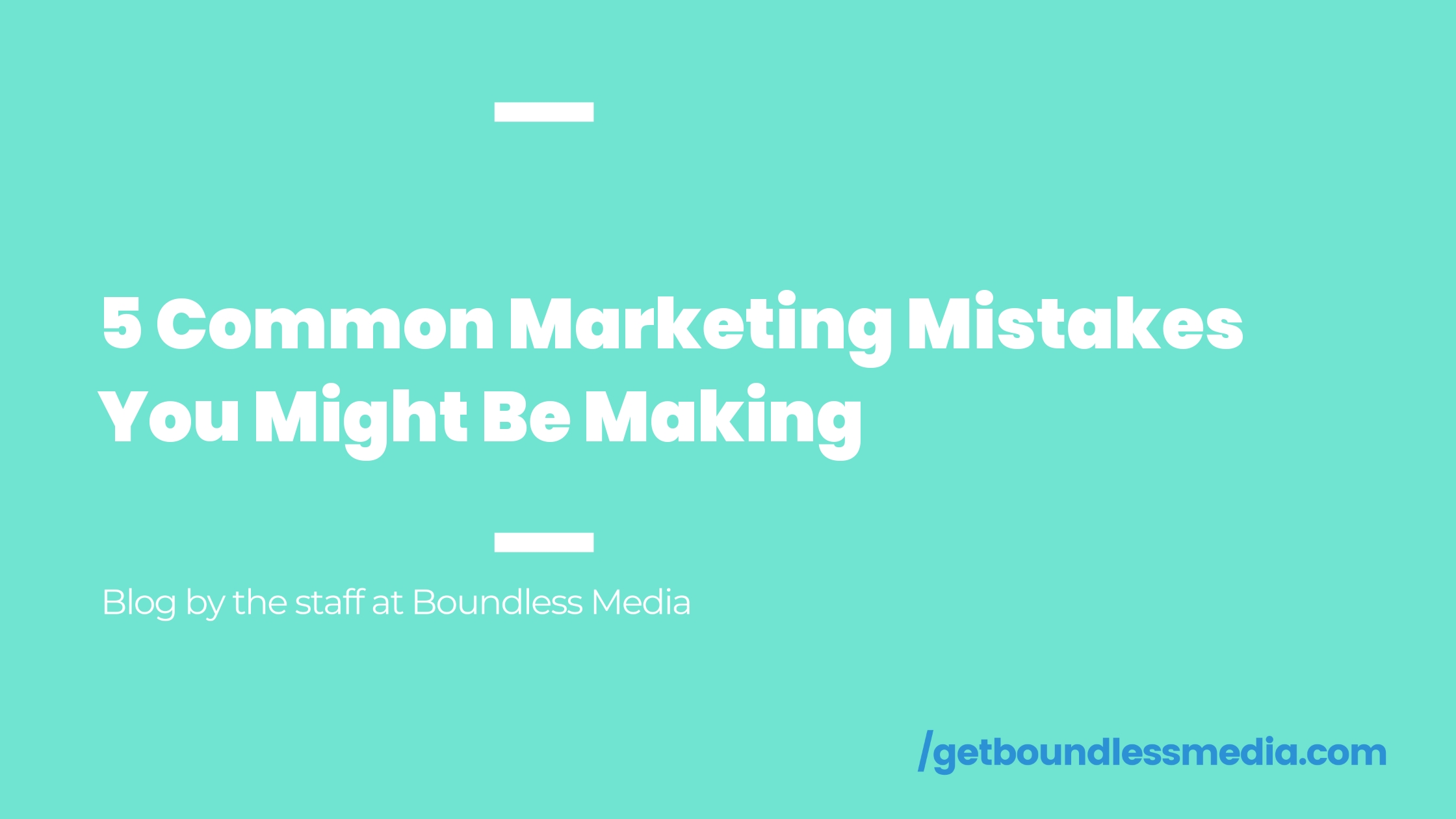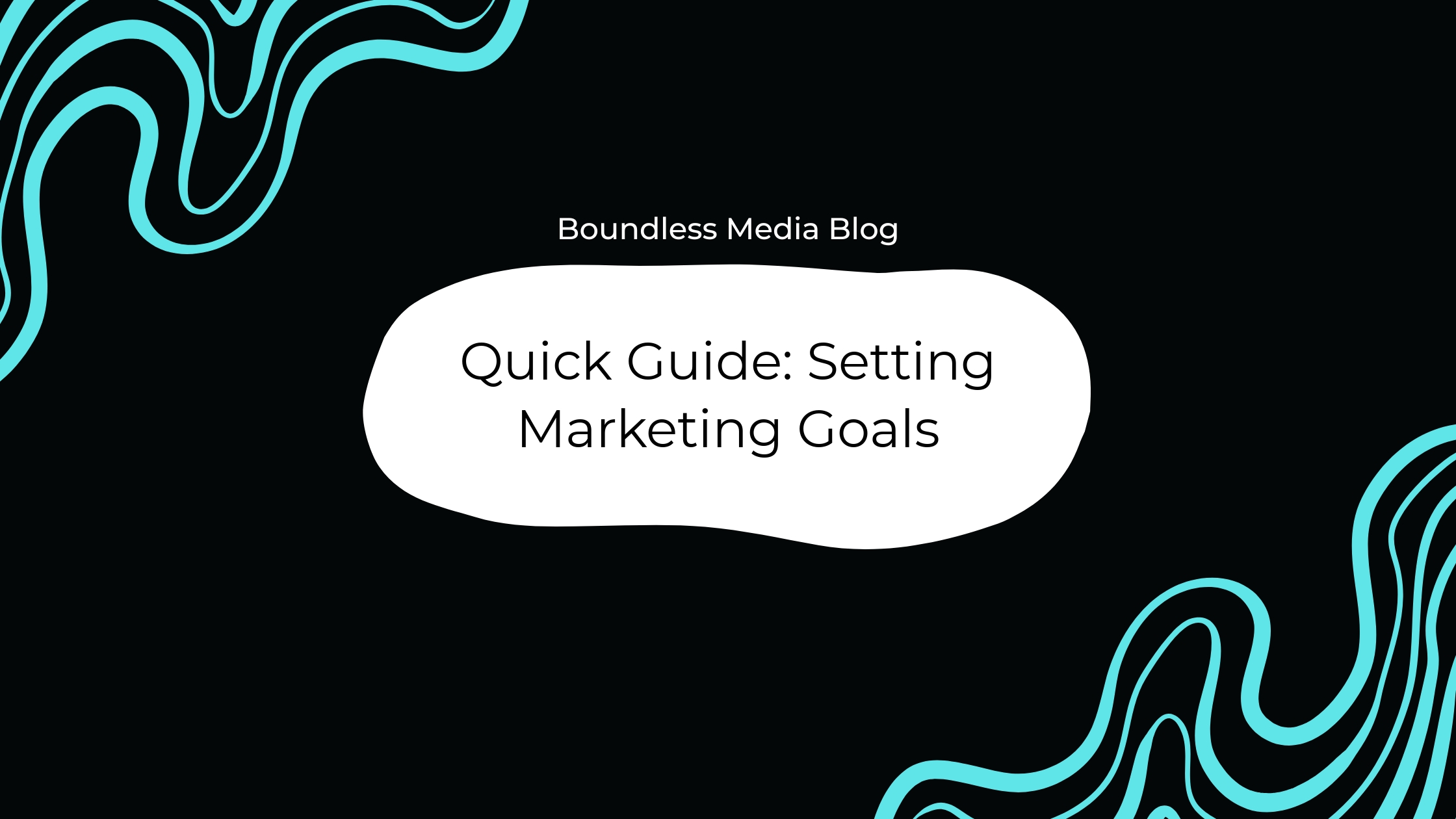
5 Common Marketing Mistakes You Might Be Making

Marketing a business can be a challenging task, and it's easy to make mistakes along the way. This blog will discuss some of the most common mistakes people make when marketing their business. From not knowing your target audience to not personalizing your marketing, these mistakes can significantly impact your marketing campaigns' success. We'll also talk about the importance of focusing on metrics that actually matter, consistency in your marketing efforts, and the importance of researching social media platforms before deciding to use them. By avoiding these common mistakes, you can ensure that your marketing efforts are effective, efficient, and aligned with your business goals.
1.) Not knowing your target audience
When you're investing in outbound marketing, you need to know who your target customer is. If you don't know this, it's impossible for the rest of your team to understand the purpose of outbound and why we're doing it.
Defining your ideal customer is more than just knowing what industry they work in or what social networks they use—it's about understanding their pain points and how they would like to be reached. When figuring out who your ideal customer is, here are some questions that can help:
- How old are they? What do their lives look like? Do I want them as a client right now? Are there any demographic trends that might help my business grow faster if I focus on younger or older clients?
- What do they care about most? Why should I care about helping them solve those problems (and why should other potential customers care)? What solutions do competitors offer customers with similar problems/needs, as well as solutions that fall short of solving those needs—how will my business stand out from other businesses offering similar products/services/solutions?
To create content your audience will want to consume and share, you need to know them. You should also know what they're looking for, how they're feeling at the moment, what they're buying, and how they are buying it. This information can increase your chances of attracting more customers who are ready to spend money on what you have to offer.
2.) Not personalizing your marketing
Marketing can be personalized, but only to a point. Personalization has become a buzzword in the world of outbound marketing, and for a good reason: it's a great way to target your ideal customer. But what does "personalization" actually mean?
First and foremost, it means that you are sending messages that are relevant to your prospects—messages they want and need to see. These include emails with helpful information on how they can solve their problems by using your product or service—or even just letting them know about an upcoming event where they might find themselves rubbing shoulders with other people who could be potential customers for you and/or your company!
There isn't just one set of messaging for every customer segment (that would be impossible). Instead, each group has its own unique needs and wants, which must be addressed through personalized messaging.
3.) Caring too much about vanity metrics
"Vanity metrics" include impressions, "likes," shares, comments, followers, open rates, views, traffic, time on site, bounce rate, and more. You might also hear them referred to as engagement metrics. Marketers commonly use these metrics to track the success of their social media campaigns. Oftentimes, however, they aren't a conclusive portrayal of a campaign's success. The number of likes received on a post isn't always directly correlated to the number of prospects converted or products sold. Understanding this will help you create marketing goals that partner with your business goals.
To align your marketing goals with your business goals, it is important to set specific, measurable, attainable, relevant, and time-bound (SMART) goals for your social media presence, and track progress against these goals. This can include objectives such as increasing brand awareness, driving website traffic, generating leads, or boosting sales. By regularly reviewing your social media engagement metrics and adjusting your strategy as needed, you can ensure that your social media efforts are supporting your overall business goals.
4.) Not being consistent
Being consistent with marketing is crucial for a business to grow. Consistency in messaging, branding, and promotions helps to build trust and credibility with customers. When a customer sees the same message, branding, and promotions over time, they are more likely to remember the business and its products or services. Additionally, consistent marketing helps to increase brand recognition and awareness, making it easier for customers to identify and choose your business over competitors. Furthermore, regular marketing efforts can help keep your business top of mind for customers so that they will think of your business when they need a product or service that you offer. It also allows you to track the effectiveness of your marketing campaigns over time, identify which methods are working, and adjust your strategy accordingly. In short, marketing consistently helps to build a strong and recognizable brand, increase customer loyalty, and drive sales and business growth.
5.) Experimenting with new platforms before doing your research
Marketers should research a social media platform before deciding if they should use it for their business because not all platforms will be a good fit for every business. Different platforms have different audiences and demographics, and it is essential to understand where your target audience is most active. For example, if your target audience is primarily older adults, it may not make sense to invest heavily in TikTok, which has a younger user base. Additionally, some platforms may be more suited for certain types of content, such as visual-heavy platforms like Instagram and Pinterest for businesses in the fashion and beauty industry.
By researching a social media platform before deciding to use it for your business, you can ensure that you are spending your time and resources effectively and reaching the right audience. Investing time and resources on a platform where your target audience is not active is not only a waste of time, but it can also damage your brand by not reaching the right people. It's essential to understand your target audience, their demographics, and which platforms they are active on before deciding which platforms to use for your business.
If you want help figuring out how to best market and grow your business, feel free to reach out to Nico at nico@getboundlessmedia.com or visit us on social media!
Get More Estimates Booked On Your Calendar



*Data summarized from all Home Services Verticals with average project values over $3,500






.svg)